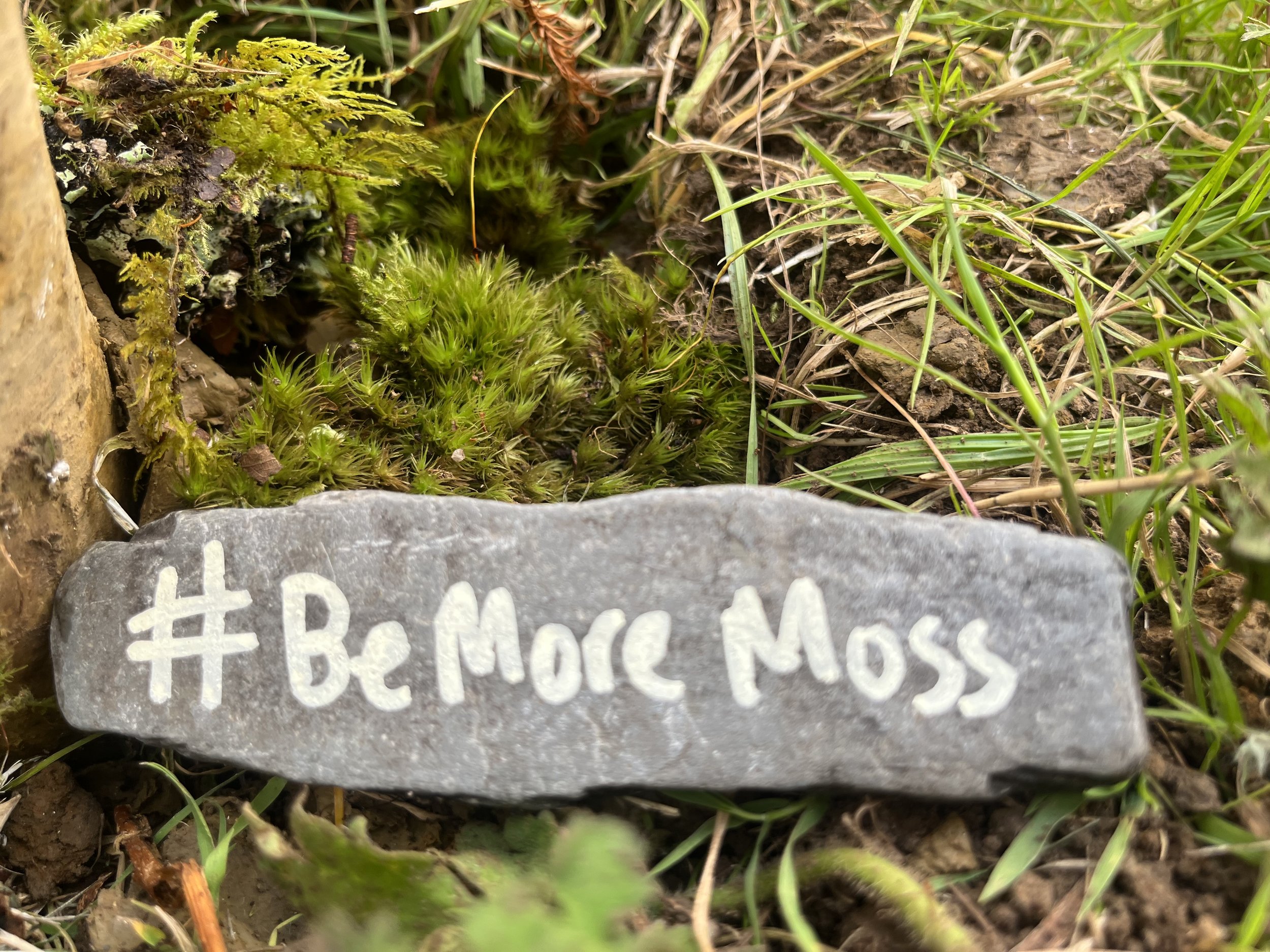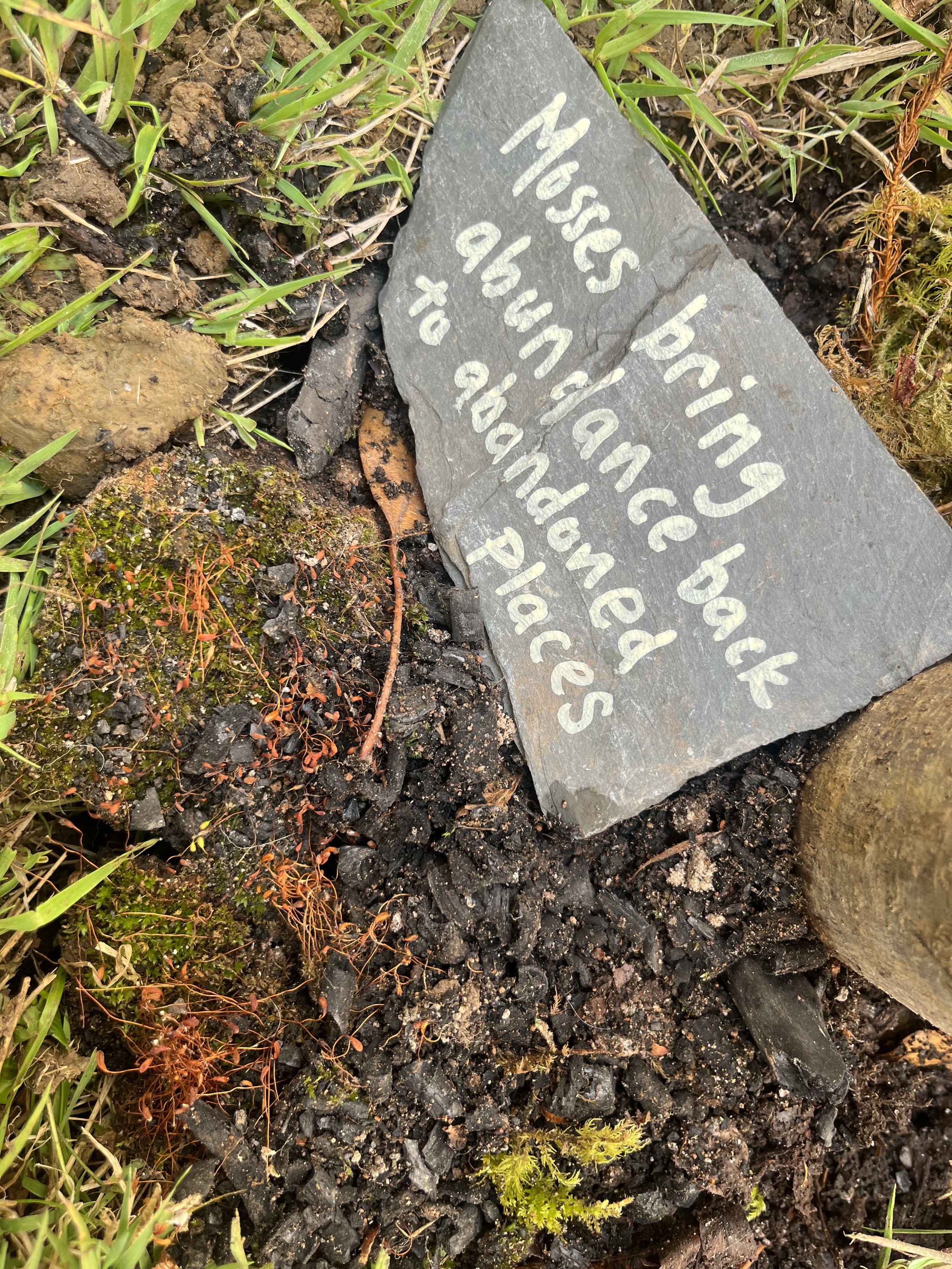Glastonbury Festival, Farming, and collaboration
Photo from Facebook @GreenFuturesField
When you are at Glastonbury Festival it is hard to imagine you are on a farm – a pretty huge dairy farm. In fact, it is hard to imagine the world outside the perimeter walls with most of the hedges and trees fenced off. As you arrive, you are faced with this massive theme park, something for everyone’s imagination and interest ... and our themed area was called Green Futures, how apt!
We were invited to take The Mossy Carpet to the Green Futures fields and were lucky enough to find some financial support to help us deliver our work, make our exhibition, and tell stories of peatlands and landscape recovery on Dartmoor.
Glastonbury Festival is one of the biggest in the world, powered by renewables and striving for a low carbon footprint. So many solar powered and pedal powered venues. We took our own solar panel artwork to power our needs too.
We had a chance to meet all sorts of people from right across the UK. At the beginning you talk to families who are camping nearby, crew members, and people working on site who need a bit of respite. They are mostly working and volunteering because they believe in the causes: Water Aid, Greenpeace, Fairtrade, CND. Later in the weekend you find punters make their way from the manic areas of the Festival site. These people love their music and we were really pleased that they also love mosses and The Mossy Carpet. Many of them were young adults, people we don’t often reach.
While making pompoms for The Mossy Carpet, I came across a farmer from the Somerset Levels. He told me that in order to put on this huge cultural event the Eavis family had to draw up 29 negotiated agreements with other farmers.... so, the Festival only succeeds because of collaboration and cooperation between many different land holders. I was struck by how similar this is to Dartmoor National Park. You could argue that it is another cultural ‘theme-park’, with nature or landscape recovery at its core. It takes large clusters of farms (more than 20 in Central Dartmoor Landscape Recovery Area)) to work together, raise a multitude of agreements and projects to make things happen for whole landscapes. This all takes place with some farmers having great ideas and then added resources from the government to support them. Farming in Protected Landscapes grants fund smaller projects that lay the foundations for larger scale projects. My new participant, the Somerset farmer, sometimes works with disadvantaged people, and through our talking he had some ideas for some more creative things he could do on his farm – even joining in with making The Mossy Carpet. We love these discussions that happen while making! The FiPL grant can support ideas and make them come alive and grow.
I also met someone from Yorkshire who was really interested in the way the back of the mossy carpet was made from Dartmoor fleeces that would otherwise be thrown away. The Hill Farm Project on Dartmoor has upcycled nearly 20 tonnes of fleece and turned it into felt for mulching new planting, or for helping to dam streams and keep the peatlands wet and healthy, slowing the flow of water, preventing flooding downstream. This woman left us with her own ideas for working with farms in her area to do more with the wool, as well as check out what was happening to restore her peatland moors nearby. She may even find some funds to help them all, working in collaboration, for a restoration project.
Another farmer at Glastonbury wanted to talk about how the farms worked together on Dartmoor, and it was nice to share good news about the Landscape Recovery Areas, and exchange mossy ideas.
In our five days of delivery, we really felt like we encouraged people to get creative and speak up for peatlands and bogs. In the heat of Glastonbury Festival, it was a good topic to talk about! Reaching out to new audiences, giving them shelter with cool mossy damp air, we gave thoughts of recovery, regeneration and collaboration with the added satisfaction of joining in with a landscape scale massive participatory artwork - The Mossy Carpet.
Thanks for support from Southwest Peatland Partnership, IUCN UK Peatland Programme and Dartmoor FiPL grant scheme, Dartmoor National Park.

















